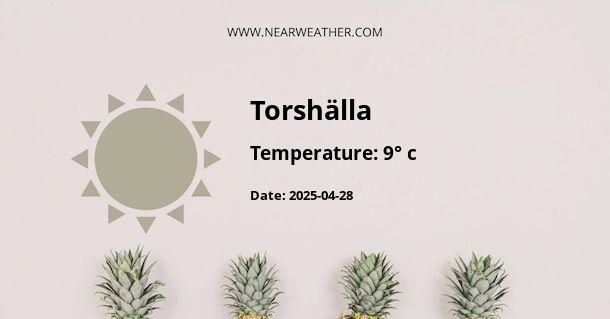Torshalla, Sweden: Climate and Weather Year Round
Torshalla is a small town located in the municipality of Eskilstuna, in the Södermanland County of Sweden. Situated in the central part of the country, Torshalla experiences a temperate climate with distinct seasons throughout the year. Understanding the weather patterns and climate conditions of Torshalla is essential for residents and visitors alike. In this article, we will delve into the climate and weather of Torshalla year round, providing detailed information and insights.
Climate Classification
Torshalla falls under the classification of a humid continental climate, also known as a temperate continental climate (Köppen climate classification Dfb). This climate type is characterized by cold winters and warm summers, with distinct seasonal variations. The proximity to the Baltic Sea also influences the local climate, moderating temperature extremes and leading to slightly milder conditions compared to inland areas.
Temperature
Temperature variations in Torshalla are significant throughout the year. The summers are relatively mild, with average highs reaching around 20°C (68°F). July is the warmest month, with average highs of 23°C (73°F). On the other hand, winter brings cold temperatures, with average lows dropping to -6°C (21°F) in January, the coldest month. Frosty conditions can persist from December to March, and temperatures occasionally drop below -10°C (14°F) during the peak of winter.
Spring and autumn serve as transitional seasons, with temperatures gradually changing. In spring (March to May), temperatures start to rise, and the weather becomes more pleasant. Autumn (September to November) brings cooler temperatures and the beautiful colors of foliage as the trees prepare for winter.
It is important to note that these temperature ranges are average values and may vary from year to year. Extreme heatwaves or cold spells can occur, but they are relatively rare in this region.
Precipitation
Torshalla experiences moderate levels of precipitation throughout the year. Rainfall is evenly distributed, with no distinct dry season. The wettest months are typically July and August, which coincide with the summer season. Autumn and spring also see a fair amount of rainfall. On average, Torshalla receives approximately 600-700 millimeters (23-27 inches) of precipitation annually.
Winter precipitation mainly comes in the form of snow. Snowfall is common from December to March, with an accumulation of around 30-50 centimeters (12-20 inches) throughout the season. The snow cover adds a picturesque charm to the town, creating a winter wonderland for outdoor activities such as skiing and snowboarding.
Sunshine Hours
Throughout the year, Torshalla enjoys a moderate amount of sunshine. The number of daylight hours varies significantly depending on the season. In summer, the days are long, with up to 18 hours of daylight in June. This provides ample time for outdoor activities and exploration. In contrast, winter brings shorter days, with only around 6 hours of daylight in December. Despite the shorter daylight hours, Torshalla still offers opportunities for enjoying winter sports and other indoor activities.
Wind Patterns
Torshalla experiences relatively calm wind conditions throughout the year. The town is sheltered from strong winds due to its inland location and the surrounding landscape. However, occasional gusts of wind can occur, especially during stormy weather or when strong weather systems move through the region. The wind direction tends to vary, but prevailing winds often come from the west and southwest.
Weather Hazards
While Torshalla does not face significant weather hazards, it is important to be prepared for occasional extreme weather events. Thunderstorms occasionally occur during the summer months, bringing heavy rainfall, lightning, and strong winds. In winter, blizzards and snowstorms can impact the region, causing temporary disruptions. It is advisable to stay updated with weather forecasts and follow any advisories or warnings issued by local authorities.
Conclusion
Torshalla experiences a temperate climate with distinct seasons throughout the year. Mild summers, cold winters, and moderate precipitation levels characterize the climate of this small town in Sweden. Whether you are planning a visit or considering Torshalla as your new home, understanding the local climate and weather patterns will help you make the most of your time in this charming Scandinavian location.
A - Torshälla's Latitude is 59.416672 & Longitude is 16.466669.
A - Weather in Torshälla is 9° today.
A - Climate Conditions in Torshälla shows overcast clouds today.
A - Humidity in Torshälla is 62% today.
A - Wind speed in Torshälla is 16.63 km/h, flowing at 234° wind direction. today.
